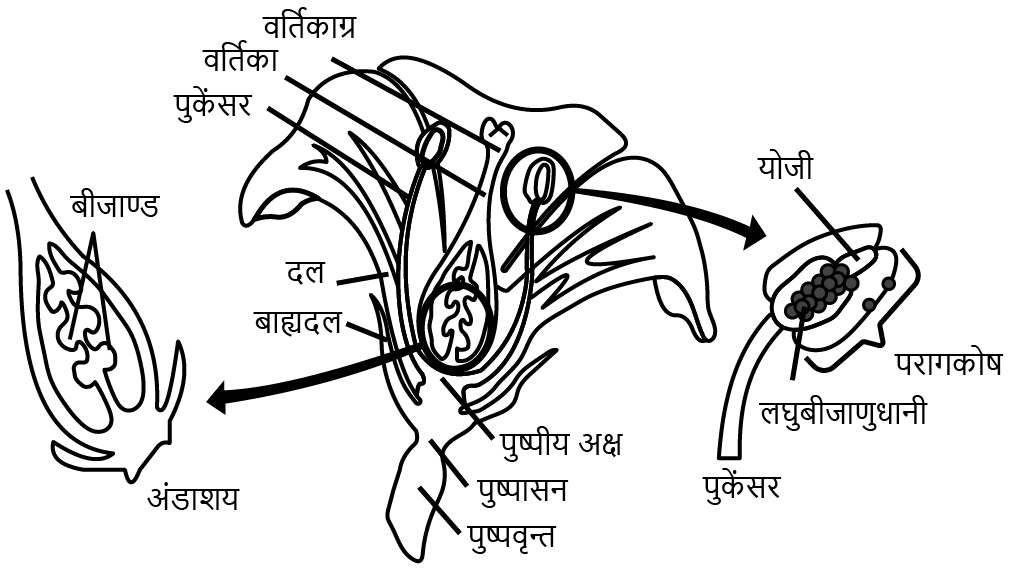NCERT Solutions For Class 7 Science Chapter 12 Reproduction In Plants in Hindi - 2025-26
FAQs on NCERT Solutions For Class 7 Science in Hindi Chapter 12 Reproduction In Plants (2025-26)
1. Where can I find correct and step-by-step NCERT Solutions for all questions in Class 7 Science Chapter 12, Reproduction in Plants, for the 2025-26 session?
You can find comprehensive and accurate NCERT Solutions for Class 7 Science Chapter 12 on Vedantu. These solutions provide detailed, step-by-step answers for every exercise question, including fill-in-the-blanks, matching columns, and long-answer questions. Each solution is crafted according to the latest CBSE 2025-26 guidelines to help you understand the correct methodology for solving problems related to plant reproduction.
2. What is the correct method to answer a question describing the different types of asexual reproduction as per the NCERT Class 7 textbook?
To answer this type of question effectively, you should first define asexual reproduction. Then, address each method separately with clear subheadings. The NCERT solutions guide you to explain each type with a specific example mentioned in the textbook. For instance:
- Vegetative Propagation: Explain how new plants grow from parts like roots, stems, or leaves, using the example of a rose or potato.
- Budding: Describe the process of a small bulb-like projection (bud) growing and detaching from the parent cell, using yeast as the primary example.
- Fragmentation: Explain how an organism breaks into pieces, with each piece growing into a new individual, like in Spirogyra.
- Spore Formation: Detail how non-flowering plants like ferns and mosses reproduce through spores that can survive harsh conditions.
3. Why do the NCERT solutions for Chapter 12 emphasise drawing a labelled diagram of a flower when explaining sexual reproduction?
The NCERT solutions emphasise drawing a labelled flower diagram because it is a fundamental tool for understanding the entire process of sexual reproduction. A diagram helps you visually connect the plant's structure to its function. By labelling the parts like the stamen (male part) and pistil (female part), you can clearly trace the journey of pollen from the anther to the stigma (pollination) and its subsequent path to the ovule for fusion (fertilisation). This visual aid is crucial for answering complex questions about how these processes are interrelated.
4. How should I structure my answer when asked to differentiate between self-pollination and cross-pollination to get full marks?
For differentiating between self-pollination and cross-pollination, the best method shown in NCERT solutions is using a table format. This ensures your answer is clear, concise, and easy to grade. Your table should have columns for the basis of comparison, 'Self-Pollination', and 'Cross-Pollination'. Key points to include are:
- Pollen Transfer: In self-pollination, pollen is transferred from the anther to the stigma of the same flower. In cross-pollination, it is transferred to a different flower.
- External Agents: Self-pollination rarely requires external agents. Cross-pollination relies on agents like wind, water, or insects.
- Genetic Variation: Self-pollination results in less genetic variation, while cross-pollination leads to greater genetic diversity in offspring.
5. When solving questions about seed dispersal, what key detail must be included besides naming the dispersal agent?
To provide a complete answer, you must explain the specific adaptation of the seed that facilitates its dispersal by a particular agent. Simply naming the agent (e.g., wind) is not enough. The NCERT solutions guide you to link the agent to the seed's characteristics. For example:
- For wind dispersal, mention that seeds are lightweight, winged (like in maple), or hairy (like in dandelion).
- For animal dispersal, state that seeds may have hooks or spines (like Xanthium) to cling to fur or be fleshy and edible to be dispersed after consumption.
6. How do the NCERT solutions for Class 7 Science clarify the confusion between pollination and fertilisation?
The NCERT solutions clarify this common confusion by presenting them as two distinct and sequential events. Pollination is defined as the very first step: the transfer of pollen grains from the anther to the stigma. Fertilisation is the next critical step that occurs after successful pollination: the fusion of the male gamete (from the pollen) with the female gamete (inside the ovule) to form a zygote. The solutions highlight that fertilisation is impossible without pollination occurring first.
7. What is the best strategy to solve the fill-in-the-blanks and match-the-following questions from Chapter 12?
The most effective strategy, as reflected in the NCERT solutions, is to master the key terms and their definitions from the chapter. For 'fill-in-the-blanks', focus on precise terminology, such as knowing that the reproductive part of a plant is the flower. For 'match-the-following' exercises, you must correctly link concepts with their examples (e.g., 'bud' with 'yeast', or 'spores' with 'fern'). The solutions provide the exact answers based on the textbook content, reinforcing these connections for exam accuracy.

























